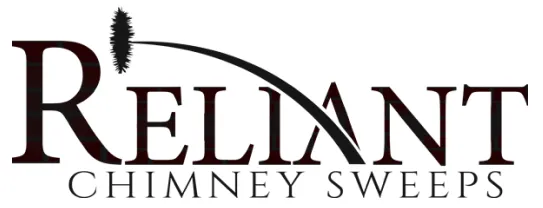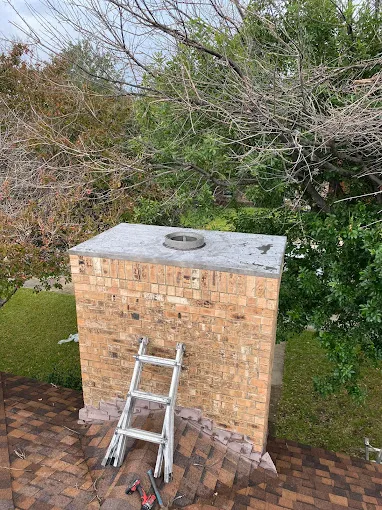As the chilly months set in, the comforting warmth of a crackling fireplace becomes a focal point in many homes. But alongside the cozy ambiance comes an essential task that many homeowners overlook: keeping the chimney clean. A clean chimney ensures better airflow, reduces the risk of chimney fires, and helps maintain a safe environment in your home. But did you know that the type of materials you burn in your fireplace can impact chimney cleanliness?
This guide will walk you through the best materials to burn for maintaining a clean chimney, why it’s essential, and the steps you can take to reduce creosote buildup that can lead to dangerous blockages.
Understanding Chimney Creosote: The Hidden Threat
Before diving into what you should burn to clean your chimney, it’s important to understand the issue at hand. When wood burns, it releases smoke, and with it, substances like water vapor, carbon dioxide, and various other particles. Some of these particles, especially creosote, build up inside your chimney over time. Creosote is a highly flammable substance that forms when wood is burned, and it can accumulate on the inner walls of your chimney. As it builds up, it narrows the chimney’s flue and can catch fire, resulting in a hazardous chimney fire.
Why Burning the Right Materials Matters
The key to keeping your chimney clean lies in what you burn. Not all types of wood or materials are created equal when it comes to chimney health. Burning the wrong materials can increase creosote buildup, while burning the right materials can help minimize it. So, what should you be burning in your fireplace to keep your chimney clean and functioning properly?
Best Woods to Burn for a Cleaner Chimney
1. Hardwoods: The Best Choice for Clean Burn
Hardwood logs, such as oak, maple, hickory, and birch, are the best option for your fireplace and chimney. These woods burn hotter and produce less smoke compared to softwoods, reducing the amount of creosote that accumulates in your chimney.
Hardwoods contain less moisture, which means they burn cleaner and longer. The hotter the fire, the more complete the combustion, resulting in less residue and creosote. Oak and hickory, in particular, are excellent choices because they burn slowly, allowing for a steady, long-lasting fire that is perfect for maintaining your chimney’s cleanliness.
2. Seasoned Wood: A Must-Have
While hardwoods are the best option, it’s essential to use seasoned wood. Wood that is freshly cut (known as “green wood”) contains a lot of moisture. When burned, it creates a lot of smoke and steam, both of which contribute to increased creosote buildup.
Seasoned wood, on the other hand, has been dried for at least six months to a year. This reduces the moisture content, ensuring a hotter and cleaner burn. Before you throw a log on the fire, give it a quick test. If the wood sounds hollow when tapped, it’s likely seasoned. If it’s still heavy or makes a dull sound, it might be too green.
3. Avoid Softwoods (Except When Necessary)
Softwoods, such as pine, spruce, and fir, should be avoided for regular burns. While they may burn faster and produce a higher flame, they also tend to release more smoke and sap, which contributes to a rapid buildup of creosote. However, there are times when softwoods are acceptable to burn—such as during the initial stages of a fire, where their quick lighting can help get a good blaze going. But for long burns, hardwoods are your go-to.
4. Burning Treated or Painted Wood? A Big No-No
Never burn treated, painted, or painted wood. These materials release harmful chemicals when burned, which can be harmful to both your health and the environment. The chemicals in these materials can also damage your chimney lining, leading to expensive repairs. Stick to natural, untreated hardwoods and be mindful of what goes on your fire.
Other Tips for Maintaining a Clean Chimney
1. Regular Chimney Inspections
Even when you burn the right materials, it’s crucial to have regular chimney inspections. A professional chimney sweep can inspect for creosote buildup, obstructions, and other issues. It’s recommended that you have your chimney inspected at least once a year—preferably before the winter season begins.
2. Chimney Sweeping
Chimney sweeping is the most effective way to remove creosote buildup. A chimney sweep uses specialized brushes and vacuums to remove soot, creosote, and debris from the chimney flue, ensuring optimal airflow and safety. Regular cleaning will not only improve chimney efficiency but also reduce the risk of chimney fires.
3. Use a Chimney Cleaning Log
Chimney cleaning logs are marketed as a convenient way to reduce creosote buildup. These logs contain chemicals that help break down creosote as they burn. While they should not be relied upon as a replacement for professional chimney cleaning, they can be a helpful tool in between sweeps to maintain a cleaner chimney. Be sure to follow the manufacturer’s instructions carefully.
4. Control the Airflow
A roaring fire might seem appealing, but it’s important to control the airflow to prevent excessive heat that could damage your chimney. Ensure your damper is functioning properly and avoid overly large or excessive logs that could cause a smoky fire. A clean, controlled burn is key to maintaining chimney health.
Safety Considerations When Burning Materials
While burning the right materials helps keep your chimney clean, safety is still paramount. Always ensure that your fireplace or wood stove is properly maintained and that the area around it is clear of flammable materials. Never leave a fire unattended, and always make sure the fire is fully extinguished before you leave the room or go to sleep.
If you have a wood stove or fireplace that is frequently used, you may want to consider installing a chimney cap. A chimney cap prevents debris, animals, and weather from entering your chimney, further ensuring that your fireplace remains clean and safe to use.
Ready to Keep Your Chimney Clean and Safe?
By choosing the right materials to burn in your fireplace and taking a few preventative steps, you can significantly reduce the risk of chimney fires and maintain the health of your chimney. Regular chimney maintenance, including professional inspections and cleanings, ensures that your fireplace remains a safe and enjoyable part of your home for years to come.
Don’t let creosote buildup sneak up on you. Contact Reliant Chimney Services today for a comprehensive chimney inspection, cleaning, and expert advice on keeping your chimney clean and safe. Call us now to schedule your appointment and keep your home warm and safe this winter!
Reliant Chimney Services is your local chimney care expert, dedicated to ensuring the safety and efficiency of your chimney. Serving homeowners and businesses, our certified professionals offer thorough chimney inspections and reliable cleaning services to keep your chimney in top condition.




